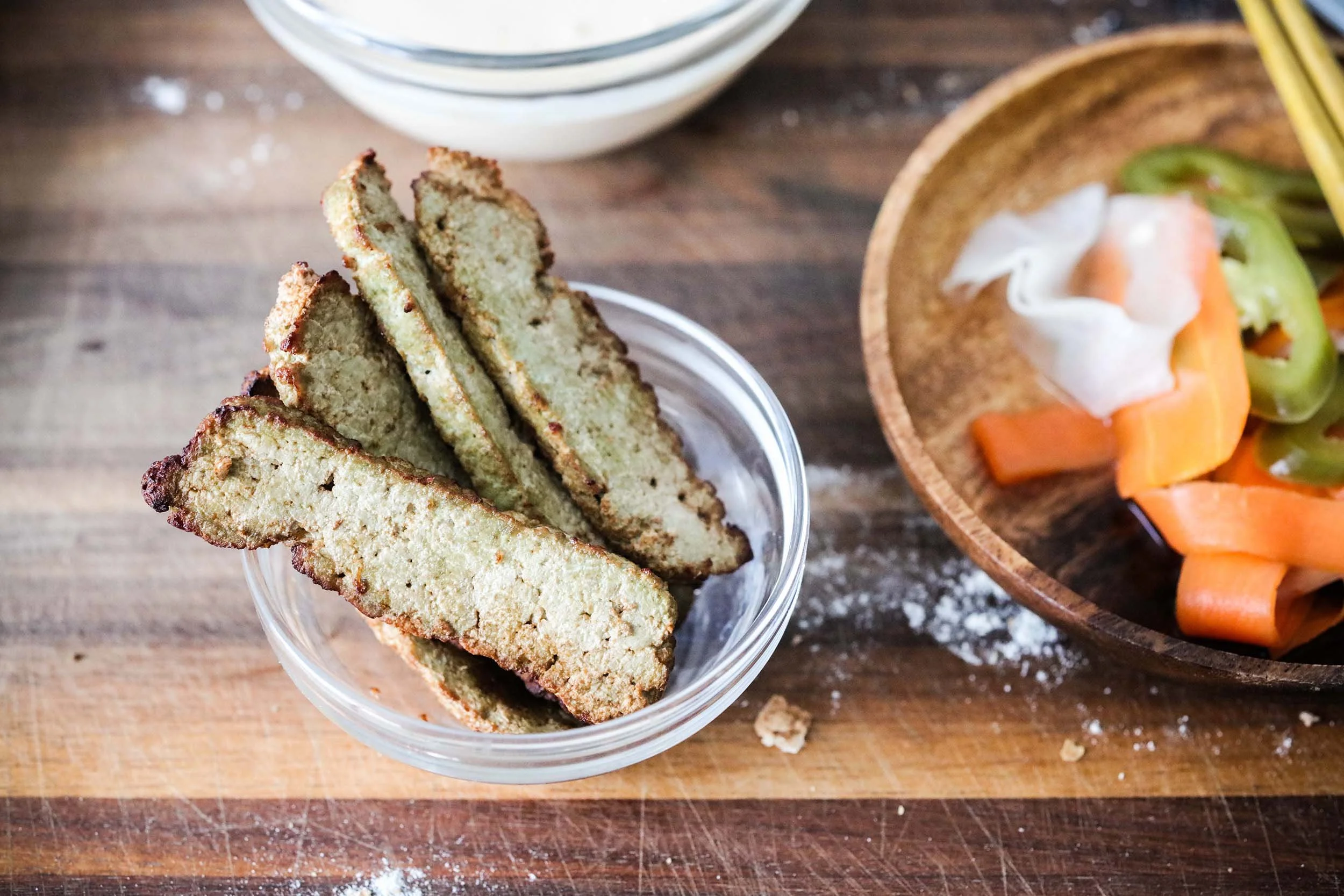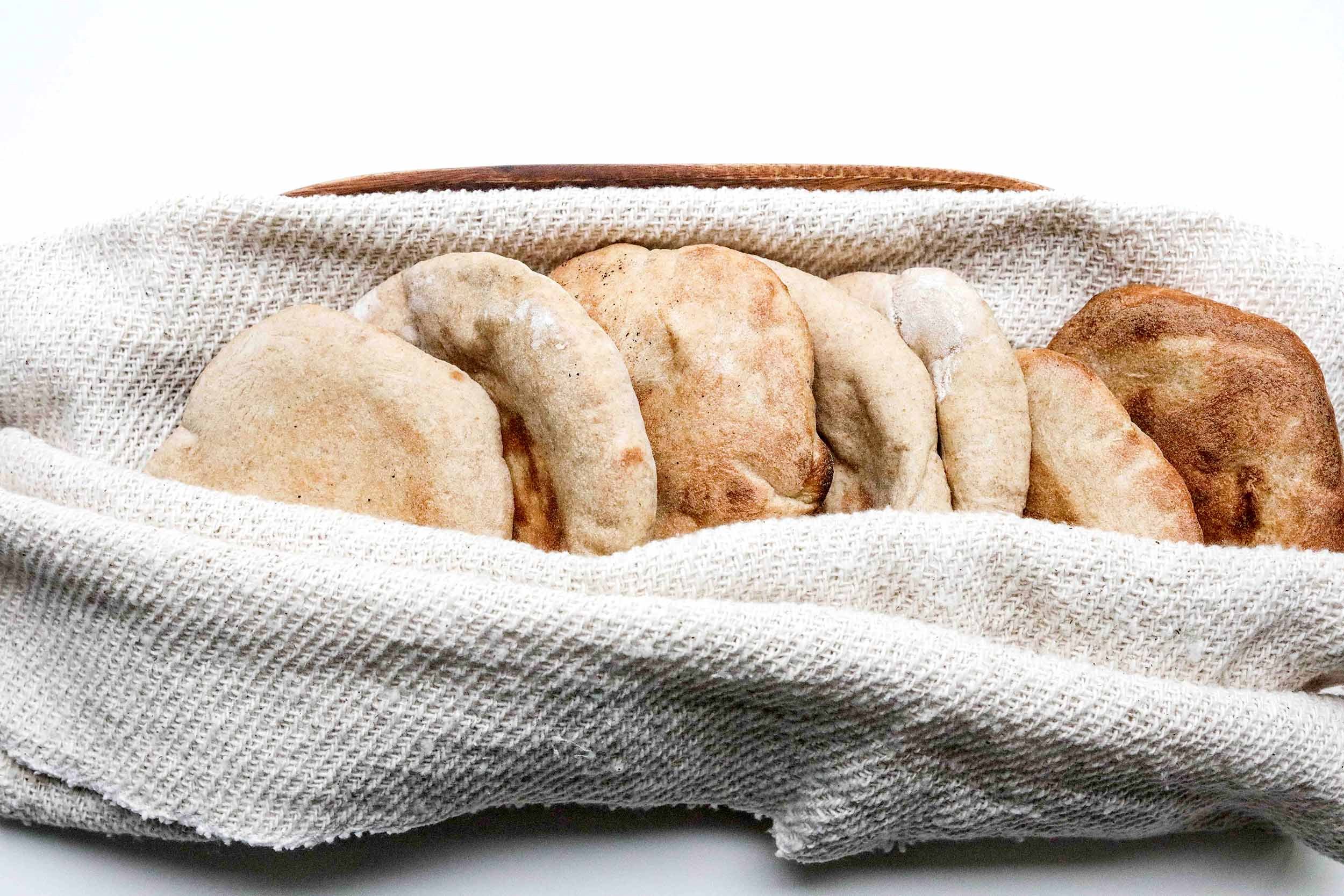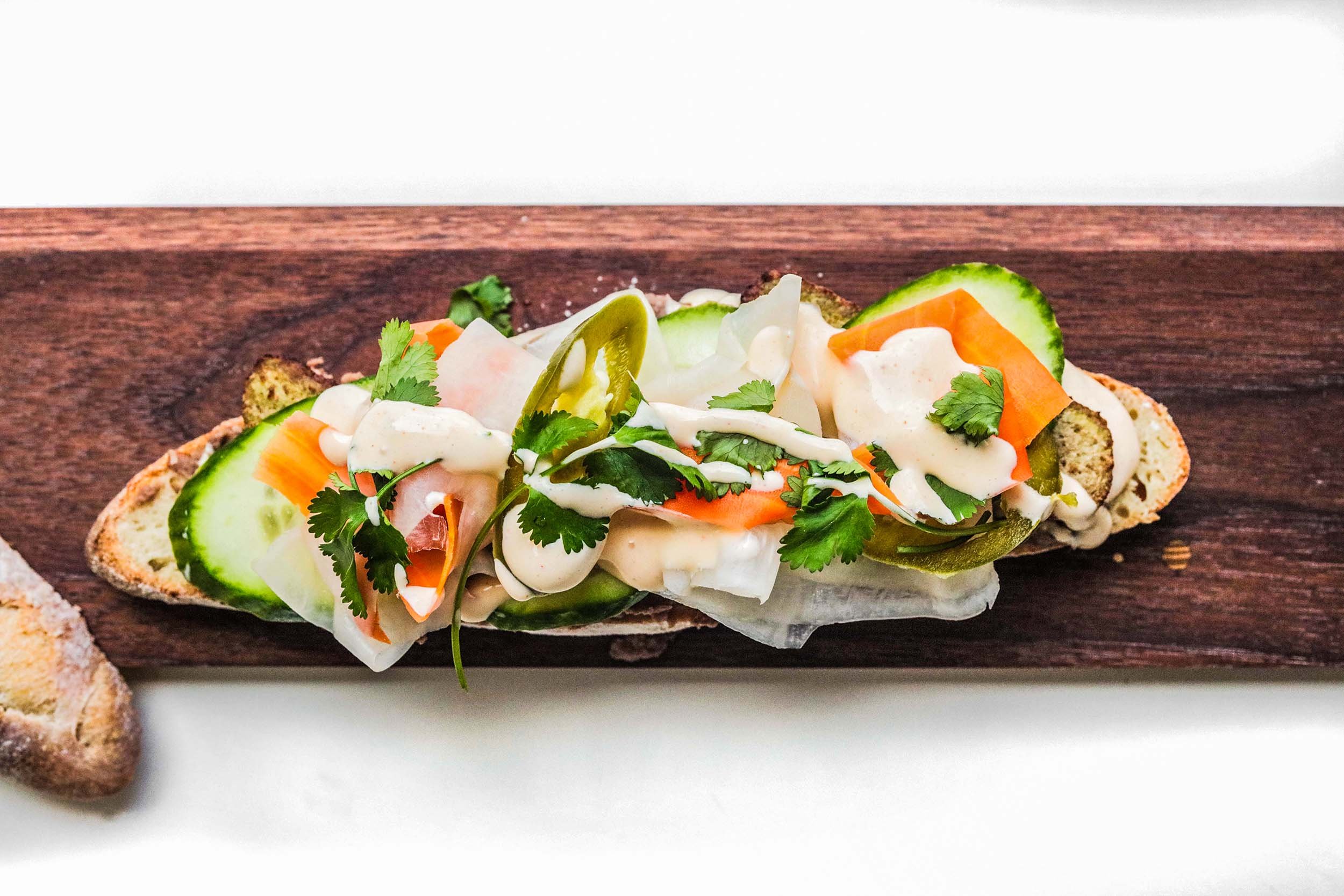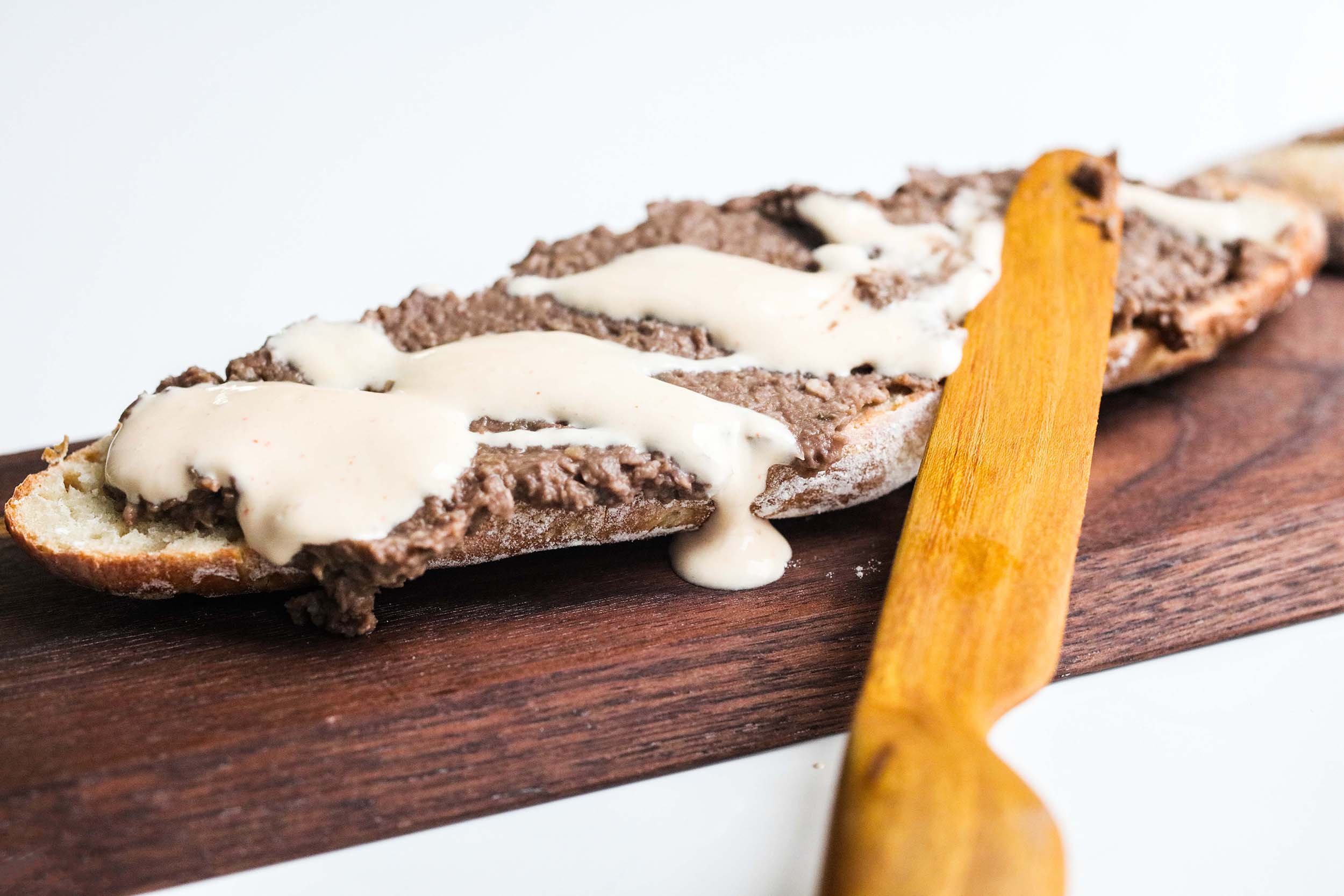Pumpkin Seed Tofu
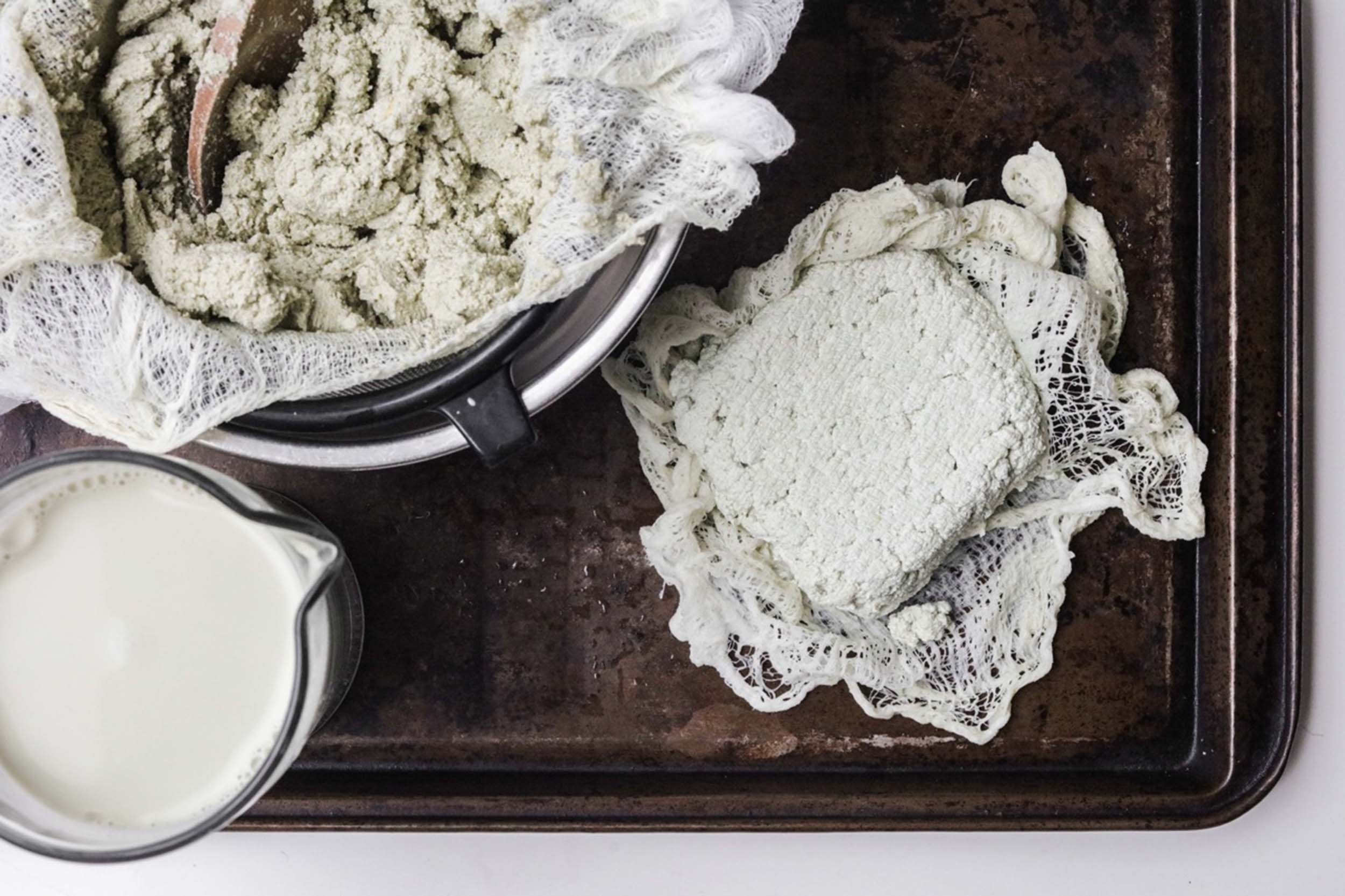
makes 4 servings
400 g raw pumpkin seeds (pepitas)
Water, as needed
Cover pumpkin seeds with water in an airtight container; allow to soak overnight in the refrigerator.
Rinse and drain pumpkin seeds, then place them in a high-speed blender with an equal amount (by volume) of water. Process until very smooth.
Strain through a cheesecloth-lined fine mesh strainer placed over a bowl, gently pressing the cheesecloth to extract as much liquid as possible from the pulp.
Once the pulp and liquid are separated, reserve pulp for another use and transfer liquid to a saucepan. Heat to a gentle simmer, stirring often, until liquid begins to curdle.
Once curds have formed, pour the mixture into a cheesecloth-lined fine mesh strainer set over a bowl, and press to remove excess whey. You can reserve the whey for another use. Transfer the cheesecloth and the curds to a tofu press or a square container, cover, and press it down with a weight. Allow it to cool, then refrigerate overnight.
The next day, remove the weight. Keep the tofu refrigerated in an airtight container until ready to use.
Pumpkin seed tofu is a great alternative to soy tofu and does not require adding a coagulant. Don’t throw out the pumpkin seed pulp. There are multiple uses across sweet and savory dishes: It’s a great addition to a veggie patty or a base for making crackers. You can use it instead of chickpeas for a play on hummus. Bake the pulp to dry it out and use it as an alternative to almond meal. Don’t throw out the whey, either! You can use it as a cooking liquid (as in the lentil pâté recipe) or in soups.
Pumpkin seeds have an assortment of antioxidants and minerals, like magnesium, which can contribute to heart health and lower blood sugar levels.
Looking for Convenience?
Yes, pumpkin seed tofu is on store shelves and made right here in Cincinnati! Look for Pumfu made by Foodies Vegan in the tofu section.
Stephanie has worked in the hospitality industry for over a decade. A graduate of CIA. NYU, and Maryville University she now oversees online programs for Auguste Escoffier School of Culinary Arts: Plant-Based Culinary Arts and Holistic Nutrition & Wellness. She also works with the Osher Center for Integrative Health at University of Cincinnati, teaching food as medicine principles. When she is not working or researching, Stephanie is an avid painter and enjoys traveling and hiking with her husband, Nick, and three rescue dogs.


